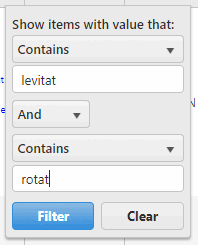Did Apple invent the levitating and rotating iDevice?
October 30 2017 Fans of Star Wars might quickly answer this 'no - George Lucas came up with something simiar in 1977!', but there is a serious side to this question. Apple has filed US patent application US20170063194 for a Electromagnetic Levitator, This claims a priority date of August 2015, and has the following first claim:
1. A levitator, comprising:
a repulsion wire coil having a vertical coil axis;
a position control wire coil having a vertical coil axis;
a rotation control wire coil having a horizontal coil axis; and
a controller coupled to each of the repulsion wire coil, position wire coil, and rotation wire coil,
wherein the controller is configured to independently control currents provided to each of the repulsion wire coil, position wire coil, and rotation wire coil.
So, in other words, a levitating device with independent control over position (via position and repulsion coils) and rotation.
But how unique is this patent? According to Espacenet, there are 17 prior art documents. But is the full list of similar inventions?
To help answer these and similar quesitons, Ambercite has developed Ambercite Ai, which applies a unique form of AI to find similar patents to one or more starting patents, based on an analysis of over 150 million published patent citations.
In this case, as it is in many cases, the choice of starting patent is straightforward. We are running a validity search for documents with a publication date prior to August 2015, and we might ask for the most similar 500 patents.
Firstly, the results as received look like this. While we requested 500 results, in the end we ended up 371 patent families that Ambercite predicted would meet the above query. The top 10 of these patents are shown below:
These results can be divided into two categories:
Known citations - already listed as prior art to this patent
Unknown citations - not recognised as patent citations, but which our system predicts could be
Known citations show what the examiner or applicant has already found - while unknown citations could be relevant patents that have been missed to date. Because this patent is yet to be granted, both could be relevant to the question of patent validity
Which leaves us with 371 patents to review. This may sound like a bit of work, but not if we apply some of the tools shown below.
For example, it can be helpful to target key features, and one such feature could be that the levitation system can rotate the object. So we could, for example, ask the keyword highlighter to highlight all variations of rotate and levitation in the results, as shown below (the * character after the term 'rotat' is a wildcard character that will highlight all words stemming from 'rotat').
And this will highlight these words in anywhere in the title, abstract and other fields of the results:
Including in the patent review box, which opens when either the abstract or an image is selected - and which can be a very efficient means of gaining a preliminary understanding of a patent.
This is already becoming become an easy means of reviewing the patents found. but maybe we can speed it up?
Looking at the original claims, two key concepts are 'rotating an object', and 'levitation'. So maybe we can use these terms in our keyword filter found in the Title and abstract field (note that this allows for word stemming as suggested below - so 'levitat' as shown below refers to leviation, leviating, etc):
The benefit of doing this is that the number of patents to review reduces dramatically.
By reopening the patent review box, we can systematically review the patents that contain both of these terms - and it does not take very long to end up with likes of patent US6770146 shown below:
This initially looks like an invention for making semiconductors, but when examined in details discloses levitating and rotating an object - and was first published back in 2002.
While the Apple patent application is not granted, if it was granted, this earlier document could be used to help support a patent reexamination as it was not a listed citation.
This talks to another benefit of the Ambercite Ai approach - it can find patents from different fields to what you might have been anticipating - and yet which are still relevant.
This is just a simple example of what is possible using this search approach. As an alternative, we could include more query patents in the search, including perhaps the above US66770146.
SUMMARY OF BENEFITS OF THE AMBERCITE AI APPROACH
Patent searching can regarded as a filtering process - we start with the 100 million published patents, and apply various filters try to come up with the best handful of patents that could be prior art.
The traditional approach is to filter with keywords and class codes. This can fail where relevant patents contain unexpected keywords or class-codes - or can to lead to excessive and costly review if common keywords are used. .
In contrast the AI approach applies its unique AI filters to find what may be the most likely to be relevant patents - and then you can use simple keywords filters to quick find an easy to search short list of patents. This can save many hours compared to conventional searching - or alternatively provide a second opinion to a conventional search. Regardless, you can increase the chance of finding what you are looking for - while in most cases saving valuable time.
Like to see Ambercite for yourself? Contact us to set up a demonstration.


